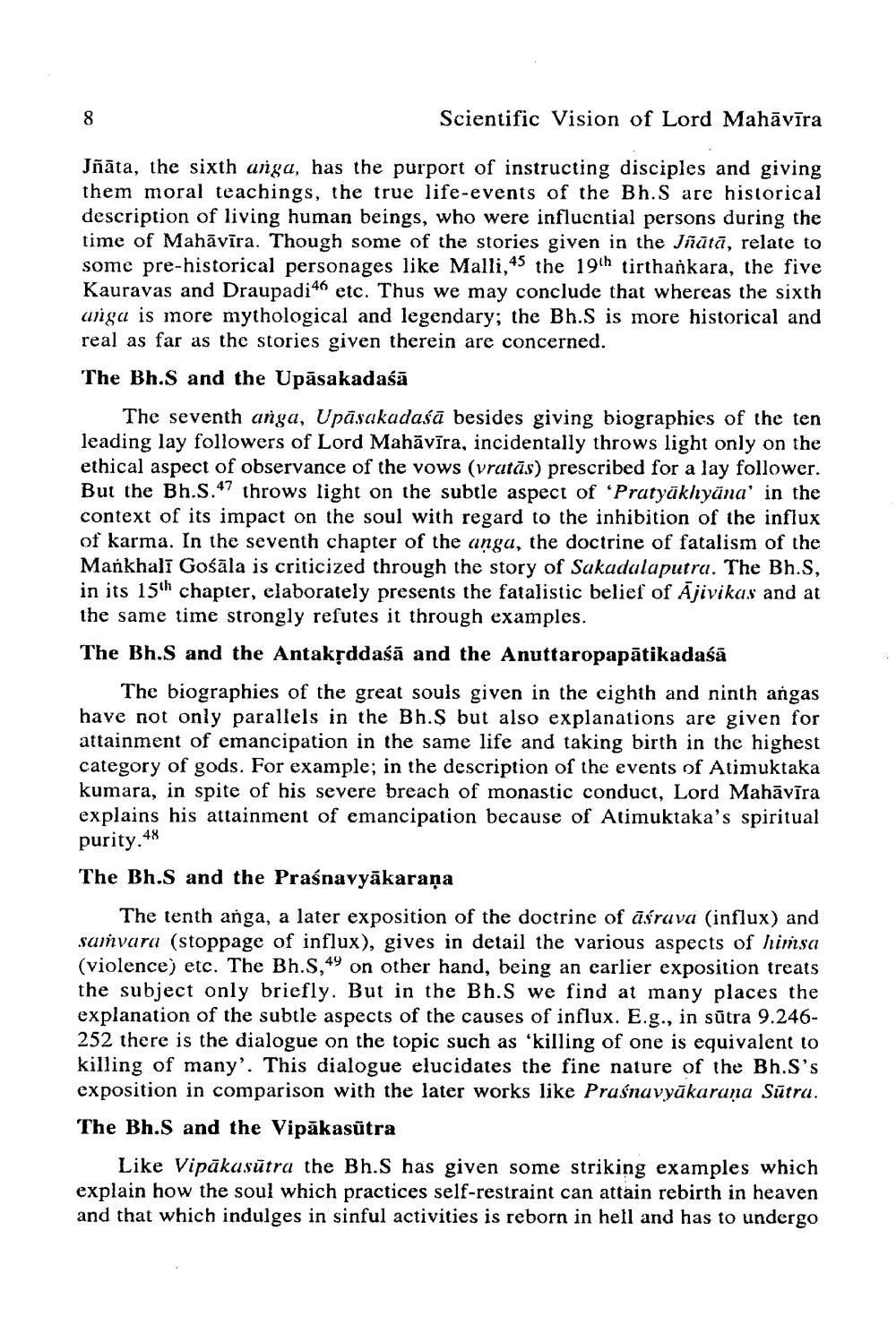________________
Scientific Vision of Lord Mahāvīra
Jñāta, the sixth anga, has the purport of instructing disciples and giving them moral teachings, the true life-events of the Bh.S are historical description of living human beings, who were influential persons during the time of Mahāvīra. Though some of the stories given in the Jñātā, relate to some pre-historical personages like Malli,45 the 19th tirthankara, the five Kauravas and Draupadi 46 etc. Thus we may conclude that whereas the sixth ariga is more mythological and legendary; the Bh.S is more historical and real as far as the stories given therein are concerned.
The Bh.S and the Upāsakadaśā
The seventh anga, Upāsakadaśā besides giving biographies of the ten leading lay followers of Lord Mahāvīra, incidentally throws light only on the ethical aspect of observance of the vows (vratās) prescribed for a lay follower. But the Bh.S.47 throws light on the subtle aspect of ‘Pratyākhyāna' in the context of its impact on the soul with regard to the inhibition of the influx of karma. In the seventh chapter of the anga, the doctrine of fatalism of the Mańkhali Gośāla is criticized through the story of Sakadalaputra. The Bh.S, in its 15th chapter, elaborately presents the fatalistic belief of Ājivikas and at the same time strongly refutes it through examples.
The Bh.S and the Antakrddaśā and the Anuttaropapātikadaśä
The biographies of the great souls given in the eighth and ninth angas have not only parallels in the Bh.$ but also explanations are given for attainment of emancipation in the same life and taking birth in the highest category of gods. For example; in the description of the events of Atimuktaka kumara, in spite of his severe breach of monastic conduct, Lord Mahāvīra explains his attainment of emancipation because of Atimuktaka's spiritual
purity.48
The Bh.S and the Praśnavyākaraņa
The tenth anga, a later exposition of the doctrine of āśrava (influx) and samvara (stoppage of influx), gives in detail the various aspects of himsa (violence) etc. The Bh.S,49 on other hand, being an earlier exposition treats the subject only briefly. But in the Bh.S we find at many places the explanation of the subtle aspects of the causes of influx. E.g., in sūtra 9.246252 there is the dialogue on the topic such as 'killing of one is equivalent to killing of many'. This dialogue elucidates the fine nature of the Bh.S's exposition in comparison with the later works like Praśnavyūkarana Sūtra.
The Bh.S and the Vipākasutra
Like Vipākasūtra the Bh.S has given some striking examples which explain how the soul which practices self-restraint can attain rebirth in heaven and that which indulges in sinful activities is reborn in hell and has to undergo




